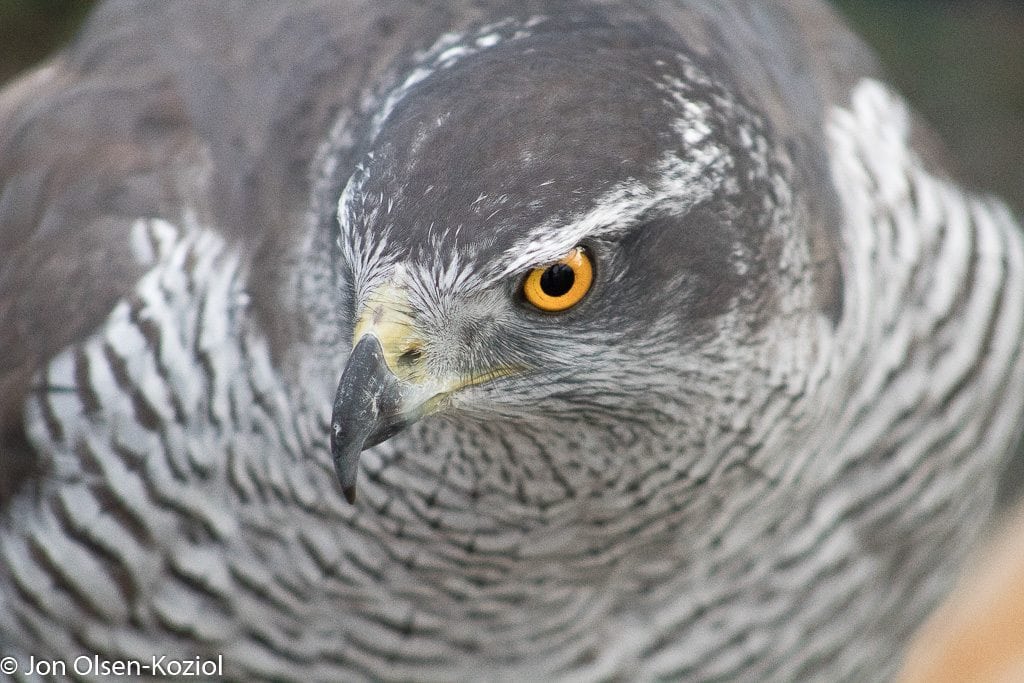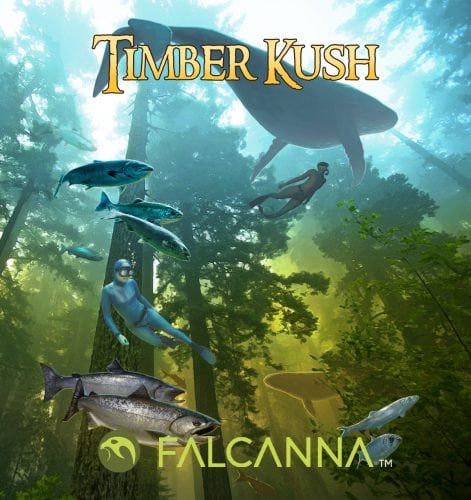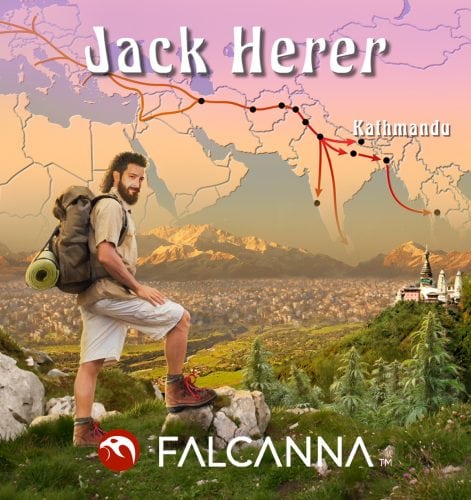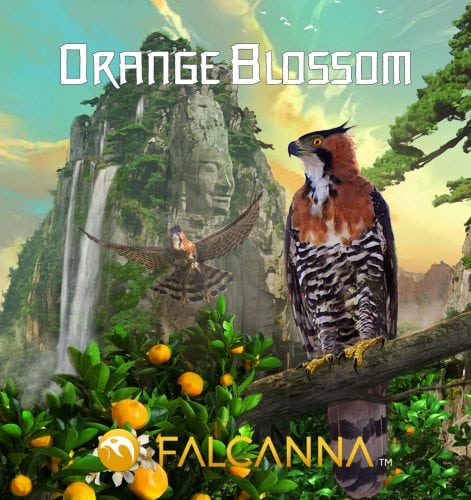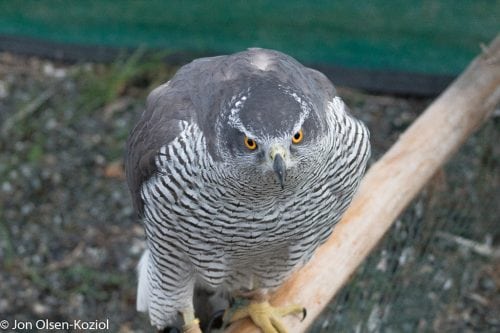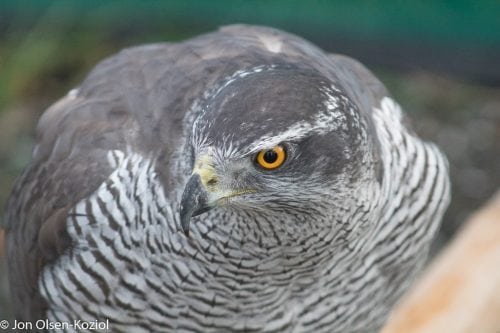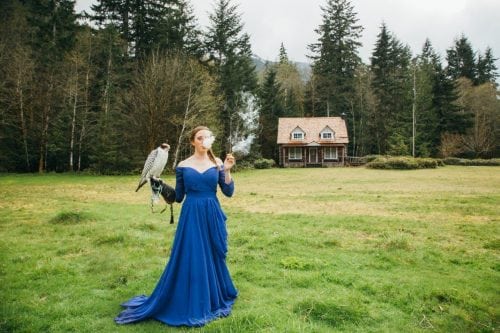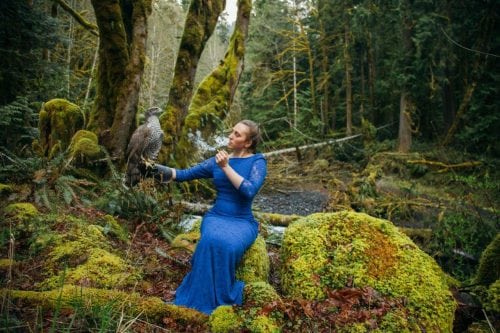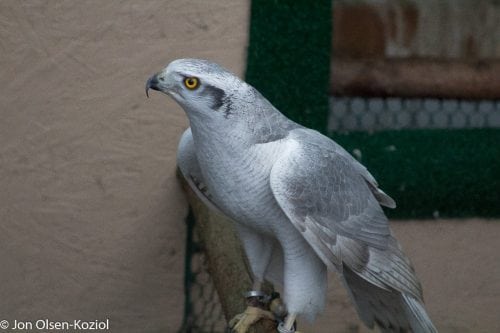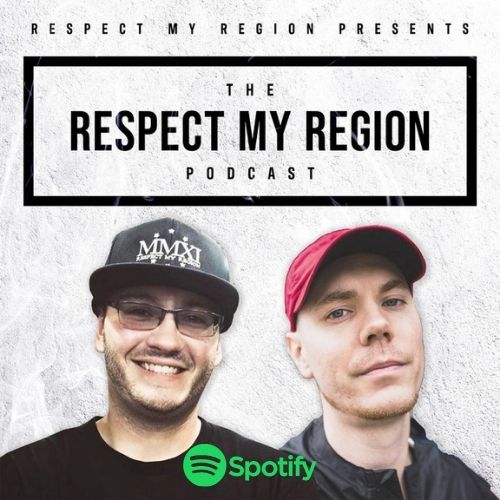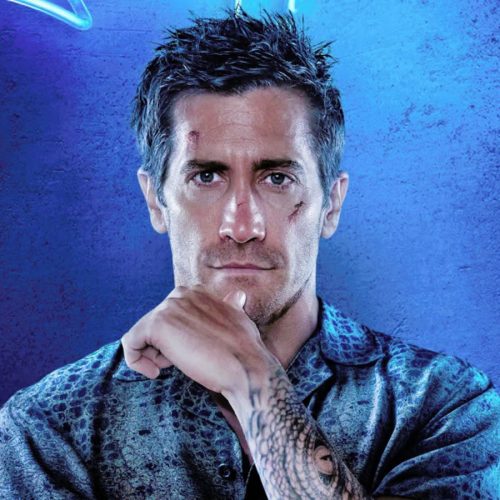Bethany Rondeau jogs towards the skirmish and ends the duck’s life quickly, much more quickly than if the raptor were left alone with it. She’s more concerned with the duck’s feelings than the raptor ever would be. It’s just expressing the prehistoric DNA coursing through its veins. Bethany wants to make the death as painless as possible.
Bethany is a master falconer. Along with her husband Justin, they raise, breed, sell, race and hunt with hawks and falcons on the Olympic Peninsula. Together they’re a cannabis- powered, falcon- flying power couple and the youngest falcon breeders in the world.
Falconry is the ancient practice of training, cultivating relationships, and hunting wild animals alongside raptors.. Historians have found evidence of its practice as early as 2000 B.C. in China, with somen reporting that falcons were given as gifts during the Heian Dynasty. Beyond China, Japanese, Germanic, Spanish and European cultures also have historical evidence of falconry.
In the 15th century, the practice hit the height of popularity in England. Raptors were specifically assigned by social class, governed by strict rules. Kings flew a gyrfalcon, the largest and most powerful falcon species. Justin said they’re known as the “queen on your hand.” Priests flew sparrow hawks and servants could only hunt with kestrels. Even the famous playwright, William Shakespeare, was a falconer. The practice didn’t fly to America until the 18th century and has remained a fairly niche practice ever since.
The Rondeau’s owns and operate Falcanna, an I-502 cannabis farm on the Olympic Peninsula. She runs it with her husband and brother. Crippling cluster migraines led Bethany to rely on cannabis as treatment and the couple began cultivating marijuana in 2009 to help others with similar problems. Falcanna transitioned from a small medical operation to a large-scale producer in the recreational market after June 2016, when the recreational market absorbed the medical system.
Through eight years of medical experience, Falcanna has experimented with and grown hundreds of cannabis phenotypes to create their final starting lineup: Orange Blossom, Timber Kush, Dutch Haze, Kush Morale, Diesel Thai, Alien Girl Scout Cookies, Pacific Blue, and Tahoe OG Kush. Genetic potential, environmental factors, and a meticulous curing process, they learned, led to their potent and beautiful cannabis plants.
Falcanna Strain Artwork
Falcanna fans are encouraged to find a strain that fits their personal style and desired experience with stickers. Grams and eighths of each strain come with a unique sticker and customers can collect them when they try new strains. The dispensary is easy to spot at vendor events because of their mascot, Sky. Just under two-feet tall with a wingspan of about four-and-a-half feet, the saker falcon is one of the calmest birds they own. Visitors can easily hold him and bud tenders and sales teams love interacting with him.
Bethany and Justin’s cannabis farming, falcon breeding fantasy life started with a red-tailed hawk, chipmunks, dandelions and talons.
Dandelions are like crack to chipmunks, Bethany says. They love them so much that they’ll even run straight into a hawk’s perch to grab them. This makes for an easy kill. It isn’t a problem until you want to take your hawk hunting and they’re already full. Bethany was planning a hunt with her bird the next day, and she attempted to circumvent the hawk’s chipmunk lunch with a sleight of hand by switching out the chipmunk with a smaller piece of meat. The trade would keep her bird satisfied with room to spare for the next day. But the hawk attacked her after she made a critical error.
“She flew right at my face,” Bethany says.
One set of talons pierced all the way through her lip, which hung off her face. The other set of talons were closed and punched Bethany in the eye. This left her bloodied and scarred, but it never deterred her from falconry. She sought out further training afterward to avoid another face-slicing encounter. It did however, keep her brother from ever being directly involved with anything of the sort.
“I fly planes and I don’t mess with birds,” Cutler said.
She met Justin through a mutual friend who was giving her some pointers on hawk handling. Their love for birds of prey spawned from a 1959 book they both read as children called “My Side of the Mountain. It tells the story of a teenage boy who runs away from home to live in the woods and along the way he steals a falcon chick and raises it to be his hunting partner. The book led Bethany and Justin to falconry as their life’s purpose, and falconry led them to one another.
Falconers are intimately involved with their birds from the start.. Birth, feeding, first flight, first hunting and reproduction; the raptor version of from seed to shelf.
This intense relationship makes falconry the “premier natural history lifestyle,” Justin says. The relationship starts as soon chicks hatch through a developmental process called imprinting. A chick learns species identification during the process. and after it occurs, the bond lasts a lifetime. This allows humans to share intimate moments with a species far separated from it in the evolutionary chain. Witnessing moments like a bird’s first flight and first kill is special but that might not be a powerful enough adjective to describe it.
Justin calls it, “next level epic.”
Hunting is a great example of life and death for a falcon or hawk, because sometimes it’s just as dangerous for them as it is for their prey. Hunting is perilous; hawks and falcons risk their lives every time they attempt a kill. Other animals can intervene during the hunt or your bird can fall victim to their prey’s escape tactics. Birds have been cut completely in half by barbed wire fences while diving towards prey.
Raptors are especially vulnerable to attacks from stray cats, dogs, coyotes and even other raptors as they finish off their prey on the ground.
One day Justin was hunting pigeons with his falcon. His bird chased a pigeon across a field when an amateur red-tailed hawk clamped on to his falcon and landed on it. Justin sprinted over 400 yards to save his falcon, but it was too late. His falcon had been shredded by the hawk and he had to kill his bird to end its suffering.
“It’s the highest high and the lowest low. There’s nothing else like it,” Bethany says.
There’s nothing worse than losing a bird in the field because it’s more than just a bird, it’s a partner, companion, and a friend. It was over a year before Justin got another bird because it takes time to grieve and move on. Despite what some uneducated critics might say, these birds aren’t slaves waiting in cages to do their master’s bidding. Through careful training, these birds are intelligent enough to understand that living alongside humans is a good way to live.
Justin refers to himself as a monkey when describing life with humans from the bird’s perspective. Raptors are smart enough to understand the benefits of living with monkeys. The monkeys provide raptors a safe home perch, a place with no predators that always has food even after an unsuccessful hunt. No matter how bad the weather is, the monkeys always provide shelter. The monkeys let the raptors fly, hunt, and breed just like their wild counterparts. The difference is they get a safety net that simply doesn’t exist for them elsewhere.
80 to 95 percent of young hawks and falcons die every winter; because it’s hard for them to figure out the right combination of behaviors that allows them to kill efficiently enough to survive the winter,” Justin says. Raptors have to eat 15 to 20 percent of their own body weight daily to stay healthy, Bethany says.
The Rondeau’s birds have plenty of opportunities to leave. Anytime the cage door opens there’s a chance to fly away and never return. Every time a bird leaves their arm during a hunt, there’s a chance it will just keep on flying, over the horizon and out of sight, but it rarely happens.
One of the Rondeau’s goshawks will wait by her perch after a day of flying; she’ll chirp and squawk to be let back in her perch. If a bird is inclined to leave, it usually comes back when it’s ready. If it doesn’t, each bird has a tracking device that can be followed by GPS so the bird can be safely transported home. It makes for an interesting conversation with border agents when your bird happens to take a trip into Canada.
Not all the birds within the sanctuary stay with Justin and Bethany for life. Many of the birds are being rehabilitated from injury and re-released into the wild. The birds they breed are sold to other falconers who hunt and race with them. Without going into Specific numbers, Justin said each bird is valued the similarly to a new pick-up truck.
It’s an odd thing for cannabis cultivation to intersect with falconry, but Bethany and Justin bring the two together in a synchronous way through. If you make a mistake in the grow room and ruin some plants, hunting with your bird takes your mind off that. Losing a bird in the field hurts, but the overwhelming aroma of the Orange Blossom grow room at day 60 helps the grieving process.
Both professions take on a level of humility. You must learn from mistakes and learn from people who are better than you. Failure with the birds leads to success in the grow room and vice-versa. Their profound relationship with raptors and cannabis requires discipline and commitment, but that discipline gives them the freedom in life to do as they see fit.
“Somehow in the overall equation we have less fucks to give,” Justin said, “and that’s very important for happiness and understanding.”


